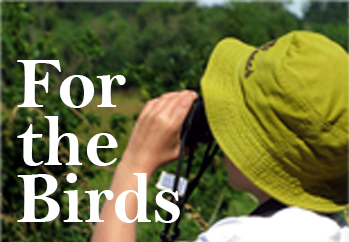Birds, Bees, Bats and Butterflies: Time to Protect the Pollinators
Opinion Advocates for ideas and draws conclusions based on the author/producer’s interpretation of facts and data.
 By Brian Kluepfel
By Brian Kluepfel
Birds do it, Bees do it,
Even educated fleas do it.
–“Let’s Do It (Let’s Fall in Love),” by Cole Porter, 1928
While strolling the grounds of Mariandale Center in Ossining this week, I noticed an area sealed off with yellow tape. Not suspecting a grisly murder on the tranquil grounds, I ventured to examine the signage, which indicated that the area was a nesting site for cellophane bees (Colletes inaequalis), and included a request to please not disturb these important pollinators. (Who, by the way, do not sting.)
According to local naturalist Karalyn Lamb, cellophane bees pollinate early-flowering bushes and trees, including apples. Small, sandy holes mark their nests, and at last count there were more than 100 in this one site.
“It’s very unusual to see such a big aggregation,” she was quoted as saying on ophope.org.
Mariandale’s relative isolation and protected environment helps in this regard, but you may see these bees in your yard, too, on open, sandy, south-facing (sunny) slopes.
A great deal of our food supply depends on the pollination of the various crops we eat. And for that, we’re dependent on a variety of messengers who, in their search for nectar, perambulate between pistil and stamen, anther and stigma, transferring pollen and promoting fertilization. One example: native bees pollinate 90 percent of our watermelons.
Fertilization agents include birds (hummingbirds), insects (butterflies, bees, wasps and others) and even bats. According to the Bat Conservation Trust, more than 500 plants depend on our winged mammal brethren for pollination, including mango, banana, durian, guava and agave. And yes, friends, there are brands of “bat-friendly” tequilas that ensure that bats remain part of the agave pollination process.
While bats may not be everyone’s cup of tea (or tequila), certainly the beauty of butterflies and moths has much more aesthetic appeal. And these insect agents are crucial, also, in the pollination of a variety of local shrubs, trees and flowers.
Charlie Roberto, a local naturalist and a retired New York City fireman, has been on the trail of Lepidoptera since the early 1990s, when he attended the first meetings of the North American Butterfly Association (NABA) in Queens. This year, he’s begun a chapter in Westchester.
“Since the ‘90s, we’ve lost many butterfly species in Westchester,” Roberto said.
And what does it mean when we lose a butterfly or other insect species?
“With that we lose a pollinator. And something that was around for millions of years, maybe before us and survived, is suddenly gone,” Roberto added. “It’s kind of a canary-in-a-coalmine scenario, a picture of the planet’s health.”
Noting the role of insects in the natural world, Roberto put it simply: “If we didn’t have insects, we couldn’t survive.”
Indeed. According to an e-mail from the Environment for the Americas, pollinators bring life to more than 75 percent of crops. Moths, in just one example, pollinate yuccas, cherries and plums. Roberto also noted that moths and beetles pollinate fruit trees.
NABA is dedicated to converting butterfly catchers with nets to butterfly observers with nets.
“The difference between birders and butterfliers,” joked Roberto, “is that butterfliers don’t like to get up early.”
The connection among all pollinators is widely recognized, and in Saw Mill River Audubon’s (SMRA) own Pruyn Sanctuary stands a butterfly/hummingbird garden, the product of sweat equity since 2001. (You may volunteer by contacting SMRA’s office.)
If you’re truly ambitious you may try to qualify your own garden with NABA as a butterfly garden (https://naba.org/butterfly-gardens/certification-program/). If you want to attract bees, hummingbirds and the like to your property, Audubon has a handy list of New York native plants on its website (https://www.audubon.org/plantsforbirds), and the Cornell Cooperative Extension in Elmsford does, too (https://albany.cce.cornell.edu/gardening/lawns-ornamentals/native-plants).
So what does it matter if millions of bats die from white-nose syndrome, or if the monarch butterfly population collapses, or bees cannot find sources of nectar to colonize any longer, or worse, are poisoned by neonicotinoid insecticides that we ourselves are using to “control” the natural world?
John Muir gets the last word here: “When we try to pick out anything by itself, we find it hitched to everything else in the Universe.” Remember that next time you bite down on an apple – and say a silent thanks to the pollinator who made it possible.
The next meeting of the Westchester chapter of NABA is at the carriage house at Teatown Lake Reservation in Ossining on Thursday, Apr. 18 at 7 p.m. Roberto and Don Riepe are the guest speakers.
Brian Kluepfel is a member of Saw Mill River Audubon and a correspondent for the Lonely Planet travel series, Birdwatching magazine and many other publications. He lives and birds in Ossining.

Examiner Media – Keeping you informed with professionally-reported local news, features, and sports coverage.
